When SXSW began in 1987, it was, for the most part, all about the music. Rock ‘n’ roll was thriving: Alterna-rock and punk nodded to the past while looking forward at the same time, and rap and hip-hop were coming into their own. Now, more than 30 years later, to some outsiders, SXSW has become a joke. They say it’s a shell of its former self, thanks to the addition of not only film, but gaming and interactive, into the programming of the almost week and half-long festival in Austin, Texas. Terms like “branding” and “innovation” have become ubiquitous in the press releases leading up to the festival, and let’s face it: while SXSW was born from ideas, that’s not what most long time attendees would consider cool.
However, there is still plenty of rock ‘n’ roll fun to be had in Austin, from the small band showcases—Hipster Robots Suck at The Side Bar is a must see—to all the dives with terrific jukeboxes and the abundance of rock ‘n’ roll documentaries in the SXSW film program. It’s a long, loud festival and here are the best of the best of this year’s docs, chronicling numerous eras of rock, country, soul, punk, and even the coolest gospel you’re going to find.
SXSW Survival Tip #1
!nvest in three battery packs for your phone. Having one dead battery pack is as useful as having a phone with a dead battery, and you’re always going to forget to charge one of them when you get back to your place…if you’re doing SXSW right, at least. You’re going to need a charge and keep up a rotation.
There’s a quote in BRAINIAC: TRANSMISSIONS FROM ZERO stating that the film “is a tragic story, but not a story about tragedy.” Born during the alternarock boom of the ‘90s that would bring “grunge” culture to the masses, Brainiac was the kind of weird that could only come out of a city as painfully normal as Dayton, Ohio. While contemporaries Guided By Voices and The Breeders were leaning heavy into hooky lo-fi stadium rock-influenced pop, Brainiac was truly something different. Led by singer Tim Taylor, the original lineup featured Juan Monaasterio on bass, Michelle Bodine on guitar; heavily influenced by Nation Of Ulysses and fellow Ohioans Devo, Brainiac was indie-rock aesthetics integrated with high-energy northern-style soul. Taylor was a hyperkinetic, weird—and, arguably most importantly, charming—frontman with all the bluster and swagger of James Brown when he took the stage.
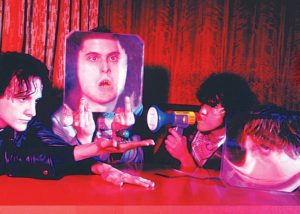
TRANSMISSIONS FROM ZERO is a fairly standard rockumentary, featuring talking head testimonials from band members, friends, family, and a who’s who of ‘90s rock talent, from Steve Albini to Melissa Auf der Maur. Despite the tragic nature of the story (Taylor died in an auto accident in 1997), there is a wave of good cheer that flows through the film when Monaasterio and guitarist John Schmersal reminisce about the good times on the road and in the studio making music together. It’s difficult to say if a band as different as Brainiac would find a place in today’s music industry; the film offers a glimpse into a very different time for rock ‘n’ roll, when independent labels flourished and oddball rock acts had a shot at the charts. Hitting on ‘90s nostalgia points—MTV luminaries Matt Pinfield and Kurt Loder show up in archival footage—TRANSMISSIONS offers a snapshot of a time and place through the story an oft-overlooked band.
SXSW Survival Tip #2
Stuff yourself on BBQ? Sip on a Fernet for an enjoyable experience. For something you may find less enjoyable, consult my Field Guide To Malort to learn where to find that magical Chicago-centric elixir.
Those born during either of the Bush administrations may look back on the ‘90s as an ultracool era when Doc Martens and flannels prevailed, independent cinema was at a zenith, and alternarock populated the airwaves. But the hard truth is that the alternative and “grunge” boom really only lasted about 8 months before giving way to post-grunge dorm-core like Matchbox 20 and Third Eye Blind, then nu-metal, and ultimately, the return of the manufactured boy band. THE BOY BAND CON: THE LOU PEARLMAN STORY focuses on the duplicitous wizard behind the curtain that brought Backstreet Boys and N’Sync, as well as second tier acts like LFO, to the Billboard charts—and countless teenage girls’ bedroom walls.

Utilizing talking heads and archival footage, THE BOY BAND CON explores Pearlman’s scams and cons, from his boyhood paper route to a blimp company that ended with insurance fraud through the era of the boy band and climaxing with the Ponzi scheme that left hundreds of people without their life savings and Pearlman in jail. Told by the people that seemed to know him best—the people he ripped off—THE BOY BAND CON finds Pearlman’s marks, including the film’s producer, Lance Bass, painting a fascinating portrait of a man who was only ever successful at being a con man…and a really good one, at that.
Even though he took these people for a ride, essentially stealing money out of their pockets, the members of Backstreet and N*Sync have a complicated relationship with Pearlman: Yes, Pearlman certainly ripped them off. But none of them would have experienced any success if it wasn’t for him putting their groups together in the first place. That’s a complicated feeling to reckon with, even if N*Sync eventually had the last laugh when their album NO STRINGS ATTACHED, released after getting out from under the thumb of the devious Pearlman, became their biggest hit. With a focus on the boy band phenomenon that Pearlman all but created, the first half is the more exciting part of the doc, with the dry back end focusing on his financial scams and the first focusing on the pop music world of the ‘90s. Still it provides for a satisfactory climax to the sordid tale.
SXSW Survival Tip #3
Abscond to the outskirts of Austin to recharge. Find a dive for a quiet drink away from the noise. Have a Pearl or a Lone Star and take in the coolest bars in the city. Allow me to suggest the Brixton, Shangri-La, and La Perla.
Rock ‘n’ roll is a state of mind, and the guys and gals behind the Church Of The Subgenius had it running through their veins and their brains. Popular amongst anti-establishment types throughout the ‘80s and ‘90s and boasting members like new wave artists Mark Mothersbaugh, Mojo Nixon, and David Byrne, The Church was inspired by extreme literature and based on the mantra, “fuck ‘em if they can’t take a joke.” J.R. ‘BOB’ DOBBS AND THE CHURCH OF THE SUBGENIUS takes an irreverent look back at The Church’s rise from what was essentially a jokey scam (the founders asked would-be members to send them $1 via the U.S. mail, in what is essentially the original Patreon) to a cult that some members took more seriously than its founders, leading to some scary times for the team behind it all. Even Ivan Stang, one of the Church leaders, is still dumbfounded by the lasting legacy of the church over forty years on. J.R. BOB DOBBS looks back at a golden age of counterculture madness, featuring talking-head style interviews and archival clips exploring the phenomenon of The Church with that flippant, derisive sense of humor that the Church was built on.
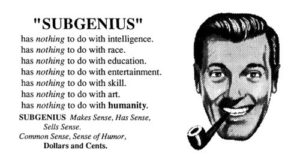
SXSW Survival Tip #4
Just leave your bag at home. Get a jacket with some pockets, Paramount and Stateside are going to make you dump all your snacks and check your satchel anyway.
THE GIFT: THE JOURNEY OF JOHNNY CASH comes from master documentarian Thom Zimny, who chronicled the lives and times of Bruce Springsteen and Elvis Presley in his previous works. A surprisingly brisk affair (his Elvis doc THE SEARCHER spans over four hours), THE GIFT explores Cash’s—a keynote speaker and performer at SXSW ‘94—life from beginning to end, pivoting on his Folsom prison concert recorded in 1968. In line with his other documentaries, Zimny utilizes voice recordings from the likes of Springsteen, Rosanne Cash, and John Carter Cash alongside archival footage, abandoning the standard “talking head” style of interview to tell the story of the man in black. The result is compelling, as well as lyrical.
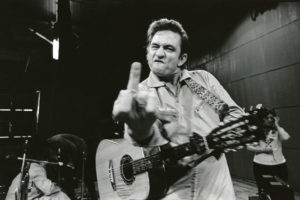
One of THE GIFT’s main focuses is Cash’s work as a pillar of progressivism: The artist fought for prison reform, engaged in activism for Native Americans, and worked towards bringing inclusiveness to white America’s living rooms, inviting countless black artists on to THE JOHNNY CASH SHOW in the late ‘60s and early ‘70s. The film also serves as a reminder that the more things change, the more they stay the same. Cash’s inclusiveness begat sometimes vile discontent with in his country fanbase, something today’s modern country singer-songwriters deal with on social media. The edict of “I wish artists would just keep their politics to themselves” is repeated ad nauseam these days, but when was that ever really the case? It certainly wasn’t for Johnny Cash, heralded as one of the greatest country artists of all time.
SXSW Survival Tip #5
If you’re still sober at the end of the night, skip the Lyft surcharge and hop on a bicycle. 7 miles ain’t that bad, the price is right, and the streets outside of downtown are empty at 3 A.M. The scooters are a fun ride, too.
In the day and age when it seems everything has been discovered, remastered, or at the very least uploaded to YouTube, AMAZING GRACE is a revelation. Shot over two nights in 1971 at the New Bethel Baptist Church in Los Angeles, the film captured Aretha Franklin recording what would go on to become the best selling gospel record of all time. Under the watchful eye of director Sydney Pollack, the show was intended for broadcast. But somewhere along the line, somebody dropped the ball, leaving the film elements lost to time. Enter producer Alan Elliott, who worked closely with the Franklin family to see that GRACE get a proper release.
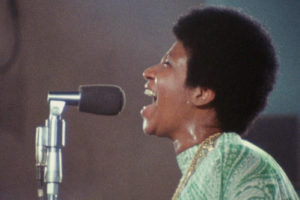
The venue is small and the recording intimate, featuring a simple band of bass, guitar, drums, piano, and organ alongside the Southern California Community Choir. The sweat and tears that went into this performance are literally visible on screen, as a nervous Franklin walks the podium before she eases into her performance after nailing that first note of Marvin Gaye’s “Wholy Holy.” Even the Queen Of Soul herself must have gotten the jitters over an intimate hometown show at her old church. Her ease as a performer is natural and must be seen, not simply heard, to understand, as the Queen returns to her gospel roots.
While Franklin is certainly the star, it is impossible to deny the charismatic Rev. James Cleveland acting as pastor, bandleader, and emcee, explaining to his congregation that, as they are filming a movie, if you say “amen” and they need another take, simply say “amen” again. AMAZING GRACE offers an unflinching look at an overwhelming performance, Pollack’s camera utilizing close-ups to dig into the soul of the proceedings and swinging around wildly to capture a woman who becomes overwhelmed with the performance. There’s a moment where two long-haired white boys show up, and at first you think, “that looks like Mick Jagger.” Then you realize that it is Mick Jagger and Charlie Watts, showing up to pay respect to their Queen. Franklin’s father calls her a “stone singer,” and even in the house of god, with millions of albums sold, isn’t that the best compliment anyone can get. Play this one loud.
SXSW Survival Tip #6
When traveling, bring two IDs—drivers license, state ID, passport, passport card—and leave one at your place with an emergency credit card. It’s easy to lose your wallet and this is a good insurance policy especially if it pops out of your pocket on one of those 3 A.M. bike rides…
While they may have been less enlightened times, the ‘70s sure seem like they were a good time, filled with all the sex, drugs, and rock ‘n’ roll that anybody could handle (and that some could not). Reminiscent of DRUNK STONED BRILLIANT DEAD: THE STORY OF THE NATIONAL LAMPOON, BOY HOWDY: THE STORY OF CREEM MAGAZINE tells the story of one of the most irreverent music publications of the era, and according to their own cover, “America’s only rock ‘n’ roll magazine.” Named for their mascot, drawn by underground comix luminary Robert Crumb, BOY HOWDY focuses on the trio of publisher Barry Kramer, editor-in-chief David Marsh, and Rolling Stone expat Lester Bangs, and their weird and wild days of rock ‘n’ roll journalism.

The film offers up a snapshot of an era of iconoclastic journalism long gone, where irreverence and bad taste intersected with serious criticism—and some of the generation’s best writers. Creem magazine witnessed the end of the ‘60s, the psych-rock scene, Detroit proto-punk, ‘70s stadium rock, punk, and hair metal, and brought it into the homes of countless teenage boys and girls every month. It also took the piss out of the music industry—which could be oh so serious and self-serving—with a sardonic, cynical sense of humor. At its best, the soul of rock ‘n’ roll is anti-establishment, and to be anti-anti-establishment within its confines took a special kind of journalist. And those journalists gravitated towards Creem.
The documentary itself is appropriately as flippant as the magazine, featuring testimonials from Ted Nugent, PLEASE KILL ME Author Legs McNeil (who gets one of the biggest laughs when it comes to the question of “who coined the term ‘punk’”), and Red Hot Chili Peppers drummer Chad Smith. These days, when anti-establishment is a brand and an establishment all its own, BOY HOWDY is an inspiring document of what can be achieved through the written word. My colleague Stephanie Crawford called Daily Grindhouse “the punk rockers of genre film journalism,” and that’s something I can die with.
SXSW Survival Tip #7
Tip your Lyft drivers well, just in case you forget your phone in their car after too much drink and too much Whataburger. They’ll bring it back to you. And I suggest you tip them again with cash. Without a phone, you’re borderline useless. Pack an old phone with you and hopefully you can get your service switched in a pinch.
Jim Marshall was as much a rock ‘n’ roll wild man as the musicians that he photographed, and while may not know his name, but you certainly know his work. Johnny Cash giving the finger at Folsom Prison. Jimi Hendrix burning his guitar. Woodstock from the scaffolding: this is the work of Jim Marshall. SHOW ME THE PICTURE: THE STORY OF JIM MARSHALL explores the life and times of a complicated, volatile, sometimes abusive artist that left an indelible mark on rock ‘n’ roll through the photographs that he took. Told by friends and associates, SHOW ME THE PICTURE is a wild look at one of the unsung heroes of rock ‘n’ roll: They played it, and he memorialized it.
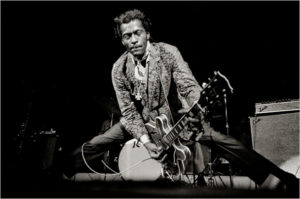
Marshall walked the walk: clad in a corduroy blazer with a bad attitude, brandishing a knife and a pistol, it’s been said Marshall possibly did more cocaine by himself than the entirety of The Rolling Stones on their 1972 world tour. From the jazz world photographing John Coltrane to the Haight Ashbury scene of San Francisco through the stadium rock of the ‘70s and beyond, Marshall was there for it all, and will be remembered as one of the premiere documentarians of rock ‘n’ roll. He was a loud, boisterous man who was known to introduce himself by exclaiming, “I’m Jim Marshall, motherfucker, who the fuck are you?” But he had an uncanny knack for capturing the intimacy of the performer simply by “looking,” as he would say. Less interested in concert photography Marshall focused on capturing an artist in the privacy of a moment in striking detail: excited or scared about taking the stage, a quiet moment of reflection, or just plucking away on a guitar in the green room. Towards the end of the ‘70s, Marshall grew to be too much to handle for some managers and agents, leading him to be kicked off several tours. “Rock ‘n’ roll is being run by accountants and businessmen,” Marshall would rail in a prophetic statement forseeing the future of celebrity groomed by publicists. Of his life and times, Marshall opines, “It was rock ‘n’ roll, man. It was rock ‘n’ roll.”
SXSW Survival Tip #8
Just sit down! Take a seat in the front row. There are no bad seats at the Paramount, Stateside, Ritz, the Zach, the Atom, and especially the Alamo Drafthouse. Can’t sit next to your friends? So what, you’re not supposed to be talking during the movie anyway.

NOTHING STAYS THE SAME: THE STORY OF THE SAXON PUB is as much a story of a changing Austin as it is of the music venue located on South Lamar (just a stone’s throw away from Alamo Drafthouse). NOTHING STAYS THE SAME looks back to the “cosmic cowboy” era of the ‘70s (a little bit country, a little bit rock ‘n’ roll, and a whole lot of drugs) through the city Richard Linklater chronicled in SLACKER in the ‘90s, to the current state of affairs, as Austin becomes the new San Francisco. Telling the story in a brisk—the film clocks in at just over an hour—style, NOTHING STAYS THE SAME features interviews and performance clips from the bands that have taken the stage at the Saxon over the years, as well as exploring the venue’s journey from a gentleman’s club to one of the best rock rooms in town. Rising property taxes are the enemy of music venues all over the world, and some of the best stuff in the documentary features the owners of the Saxon, Continental Club, and Antone’s in a roundtable discussion about the problems that come with running a music venue in a perpetually changing city, particularly one where it’s the music scene that made the town what it is. The Saxon is a piece of the old Austin that hopefully sticks around for a long time.
—MIKE VANDERBILT
- Vampsploitation - January 15, 2018
- Hiatussploitation - December 5, 2017
- Live From Fantastic Fest, 2017 - September 28, 2017
Tags: Aretha Franklin, Boy Howdy, Creem, Jim Marshall, Johnny cash, Rock N Roll, SXSW

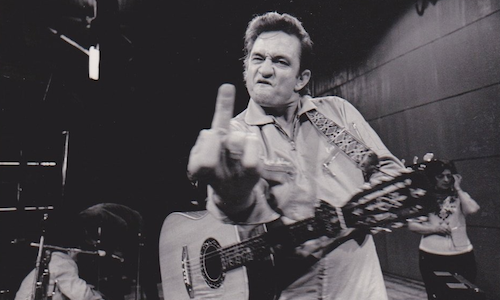
No Comments